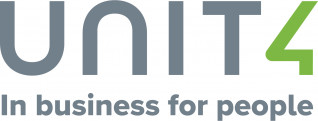It’s the age-old question, what makes a good leader? I think we have all experienced both good leadership and poor leadership. I have asked and been asked this question many times over the years in conversation, in workshops, in coaching and here’s what I’ve discovered. It doesn’t matter whether you are a leader in an organization, whether you are leading a team or a leader in a community, it all comes down to a few key attributes; being a good communicator, being approachable, supportive, versatile and being accountable.
So let’s start with communication. When it’s all said and done, being effective at keeping your team in the loop, facilitating two-way conversations, being a good listener, asking questions and taking a genuine interest in your team members are absolutely key to strong leadership. Even when a leader needs to have a crucial conversation, lending an ear to listen, being open, showing you care and demonstrating interest, will not only promote more two-way dialogue, you will gain their trust and confidence.
Being approachable is always at the top of the list when I ask others what makes a good leader. Many commented that a manager who is approachable offers unlimited support, they not only offer positive and constructive feedback, but they ask for feedback and are actually open to receiving it. This is a great segway into being supportive and versatile.
Being supportive goes hand-in-hand with being versatile. Versatility is about managing one’s emotions and helping others manage their emotions. When stakes are high and there’s a lot on the line, it can be very easy to fly off the handle and potentially “throw someone under the bus”. Everyone has bad days, so as long as it doesn’t become a habit, being supportive in these instances goes a long way. What is also key, is for a leader to recognize patterns or situations where a team member may lack skills or an ability to cope, in a given situation. It doesn’t mean they are not good performers, it simply means they appear or feel that they cannot perform under the circumstances presented. These are great coachable moments and a place where both strong support and versatility play a vital role as a leader.
A supportive leader will stand behind their people and even co-handle putting out fires if need be. Once the fire is out or at least under control, the leader will take the opportunity to debrief the situation with their team or team member. They may ask questions like, what did you notice? What went well? What didn’t go well? How come? What would you do differently? The goal being to help gain a better understanding about where things went wrong and even where they went right, celebrate the good and coach the team/team member on how to better manage this type of situation in the future. The key is to help others see the gaps and look for ways to fill them. The role of leader is not to highlight the gaps.
Funny enough, accountability is probably the most critical piece to being an effective leader. It’s always interesting to hear others describe what accountability means to them or who should be accountable and what that looks like. Often people mistake leadership to be hands-off and simply a role of overseeing-of-others or as we have heard it called in the corporate world, the top-down approach to management. What being a strong leader is really about, is being able to acknowledge, own and stand behind your decisions, mistakes or a misstep. It’s getting behind a cause, keeping your word or backing someone up where appropriate. Being a bit exposed and vulnerable has its ups and downs, but in leadership, it can mean the difference between gaining and eroding trust.
To bring this all together, the really cool thing about this is that anyone can work on themselves and increase their emotional intelligence. Whether you are a Leader or not, as you may have gathered, enhancing these skills can help us in business and in life.
Here are 5 simple steps to being or becoming a stronger leader in any capacity:
- Be Self-Aware –pay attention to how others react to you
- Self-Regulate –breathe and ask yourself, “What just triggered that emotion?”
- Ask for feedback -constructive feedback, if you’re open to it can be a huge personal growth booster!
- Be curious –during conversations and meetings, ask more questions
- Listen more -lending an ear and maintaining eye contact are great ways to show interest and be supportive… and we learn so much more as well!
Being aware of others around us and noticing our own behaviour is the first step in understanding what to work on. It is really up to each of us to make that happen.
P.S.: if you’re interested, other words for Leader are Front-runner, Trailblazer, and Spearhead, all of which represent a way of being. Think about it, when we apply for a position, although we must present substantial evidence on paper, that we can in fact do the job from a functional standpoint, it’s usually during the interview process that our behaviours, how we respond in the moment, how we manage ourselves that typically stands out and either gets us the job or not.
In reality then, it’s only after demonstrating key behaviours and proving ourselves, that we in fact earn a title. All the more reason to improve our communication and increase our emotional intelligence, wouldn’t you agree? After all, providing guidance and being a good example will be key to grow our next generation of leaders.
Written by:
Heather Wilson, ATC
Owner at Spark Your Vitality













